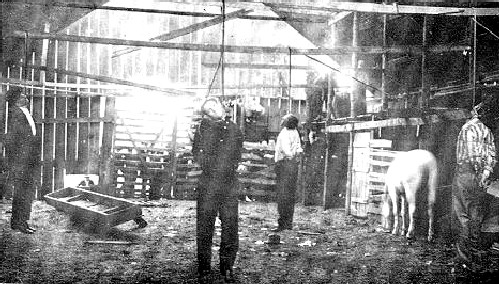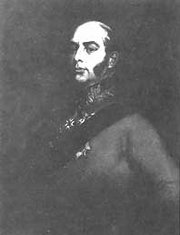4) Where would you find Erdil, Eflak, Bugdan, Bucak and Silistre? (2 points)
They are former Ottoman Turkish names for various regions in
Romania. Specifically, Erdil = Transylvania, Eflak=Wallachia, Bugdan and Bucak = Moldavia, and Silestre is part of Dobruja. Bugdan and Bucak overlap into Moldova and Ukraine, so I would have given partial credit for those answers.
5) Its rather obvious what is happening in this picture. One of the people is pretty well known. Who was he, what is best known for, and what city did this take place in.? (3 points)
This picture shows the lynching of
Deacon Jim Millers gang in
Ada, Oklahoma on April 19, 1909. Deacon Jim Miller is best known as the
probable killer of Pat Garrett. Jim Miller was a hired killer who was notorious for getting off with help from the cattle barons, so 40 citizens of Ada decided to perform a public service. Note the little boy in the opening to the lower left. He was still alive a few years ago and may still be as far as I know.
6) Who is the author of the following passage, and what place is he describing:
Beasts and birds there are none, because they find nothing to eat. But I assure you, that one thing is found here, and that a very strange one, which I will relate to you.
The truth is this: When a man is riding by night through this desert and something happens that to make him loiter and lose touch with his companions, by dropping asleep or for some other reason, and afterwards he wants to rejoin them, then he hears spirits talking in such a way that they seem to be his companions. Sometimes, indeed, they even hail him by name. Often these voices make him stray from the path, so that he never finds them again. And in this way, many travelers have been lost and have perished. (2 points)
Marco Polo, describing the
Lop Nor Desert. (Daniel Boorstin says Gobi Desert, so I would have accepted that as well; Lop Nor is more accurate.)
7) What war was allegedly started by a complaint about snoring hippopotamuses? (2 points)
The war of liberation of Egypt from the Hyksos. The insult was delivered from the Hyksos Pharaoh Apopi to Pharaoh Tao II of Thebes. Apopi supposedly claimed that the snoring of the sacred hippopotamuses was keeping him awake at night. The resulting war cost the lives of Pharaohs Tao II and Kamose before Ahmose I conquered Avaris and reunited Egypt.
 ).
).





